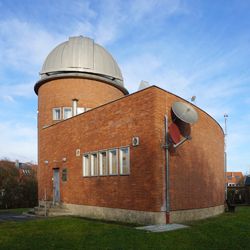Paul
Seegy
architect
born Nürnberg, 27. Jul 1891
died Nürnberg, 18. Jul 1975
Architect, senior architect
Son of Otto. Studied architecture at the TH Munich. 1914-18 war volunteer. 1919 diploma for architects, followed by state building practice at the Reichsbahndirektion Nuremberg. 1920 State examination as government architect. 1921-29 Worked in the construction department of the Nuremberg Chief Post Office, where he planned and built the Nuremberg Postscheckamt, the Altdorf Post Office, the Nuremberg Post Office 30 and the Nuremberg radio transmitter. In 1929, Seegy entered the service of the city of Nuremberg as head of the structural engineering department. In addition to municipal buildings, he planned the redesign of the Christkindlesmarkt (1933), the festival buildings and the decoration of the Volksfest (1936, together with Walter Brugmann). In 1943-45 he was also responsible for damage control and the implementation of emergency measures in connection with air raid protection. In 1945, Seegy became construction director at the Hochbauamt, and as such he played a significant role in the reconstruction of the city of Nuremberg. During his tenure, municipal buildings were constructed. During his tenure, municipal office buildings, schools, old people's homes, the theater and the expansion of the hospitals were built. He retired in 1956.
Works:
NÜRNBERG: Volkssternwarte auf dem Rechenberg, 1931/32; Fürsorgestelle für Lungenkranke, Johannisstraße 37a, 1932 (with Walter Brugmann); redesign of the extension of the municipal old people's home St. Johannes, 1932. Altersheim St. Johannes, 1934; Sparkassenzweigstelle Zerzabelshof, 1936/37; substation Bucherstraße, 1939; substation Annastraße, 1939; administrative and residential buildings of the tramway, 1939; Wagenhalle mit Dienstwohnungen an der Feuerwache Ost, 1939.
Lit.: Buildings, 1942, pp. 60, 63; Stadtlexikon 2000.
Exhibit: 1941/14; 1995/3.
(quoted from the Nuremberg Künstlerlexikon, edited by Manfred H. Grieb).
Period: 20th c.
